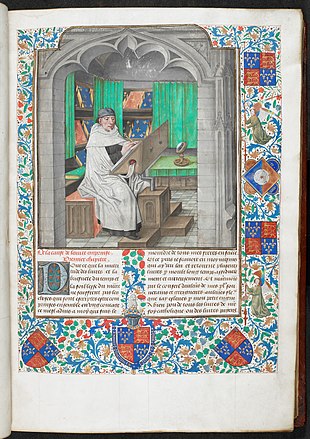

The Royal manuscripts are one of the "closed collections" of the British Library (i.e. historic collections to which new material is no longer added), consisting of some 2,000 manuscripts collected by the sovereigns of England in the "Old Royal Library" and given to the British Museum by George II in 1757. They are still catalogued with call numbers using the prefix "Royal" in the style "Royal MS 2. B. V".[1] As a collection, the Royal manuscripts date back to Edward IV, though many earlier manuscripts were added to the collection before it was donated. Though the collection was therefore formed entirely after the invention of printing, luxury illuminated manuscripts continued to be commissioned by royalty in England as elsewhere until well into the 16th century. The collection was expanded under Henry VIII by confiscations in the Dissolution of the Monasteries and after the falls of Henry's ministers Cardinal Wolsey and Thomas Cromwell. Many older manuscripts were presented to monarchs as gifts; perhaps the most important manuscript in the collection, the Codex Alexandrinus, was presented to Charles I in recognition of the diplomatic efforts of his father James I to help the Eastern Orthodox churches under the rule of the Ottoman Empire. The date and means of entry into the collection can only be guessed at in many if not most cases. Now the collection is closed in the sense that no new items have been added to it since it was donated to the nation.
The collection is not to be confused with the Royal Collection of various types of art still owned by the Crown, nor the King's Library of printed books, mostly assembled by George III, and given to the nation by his son George IV, which is also in the British Library, as is the Royal Music Library, a collection mostly of scores and parts both printed (about 4,500 items) and in manuscript (about 1,000), given in 1957.[2]
The Royal manuscripts were deposited in 1707 in Cotton House, Westminster with the Cotton Library, which was already a form of national collection under trustees, available for consultation by scholars and antiquaries; the site is now covered by the Houses of Parliament. The collection escaped relatively lightly in the fire of 1731 at Ashburnham House, to which the collections had been moved. The Cotton Library was one of the founding collections of the British Museum in 1753, and four years later the Royal collection was formally donated to the new institution by the king. It moved to the new British Library when this was established in 1973. The 9,000 printed books that formed the majority of the Old Royal Library were not kept as a distinct collection in the way the manuscripts were, and are dispersed among the library's holdings.
The Royal manuscripts, and those in other British Library collections with royal connections, were the focus of an exhibition at the British Library "Royal Manuscripts: The Genius of Illumination" in 2011–2012.[3]
- ^ Record for Royal MS 2 B V, Manuscripts: Closed collections, British Library
- ^ Royal Music Library, British Library
- ^ Genius